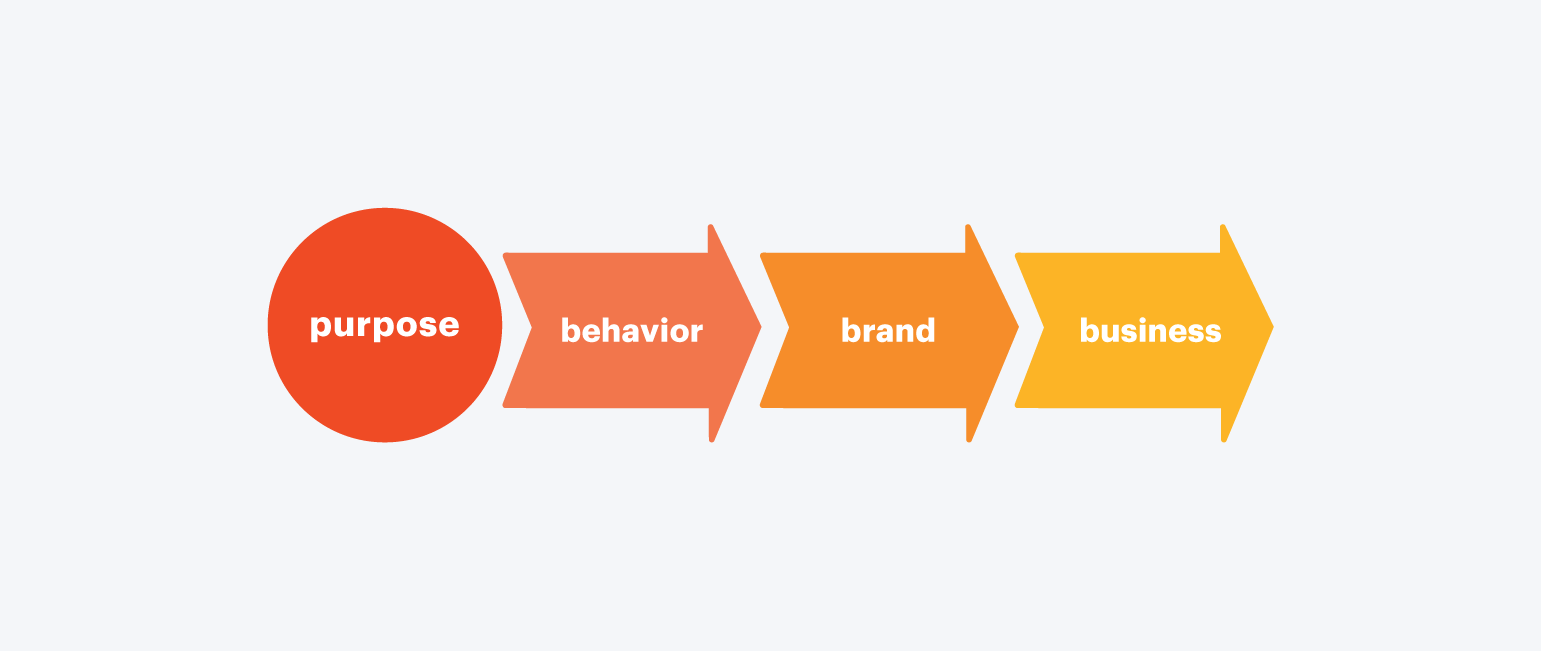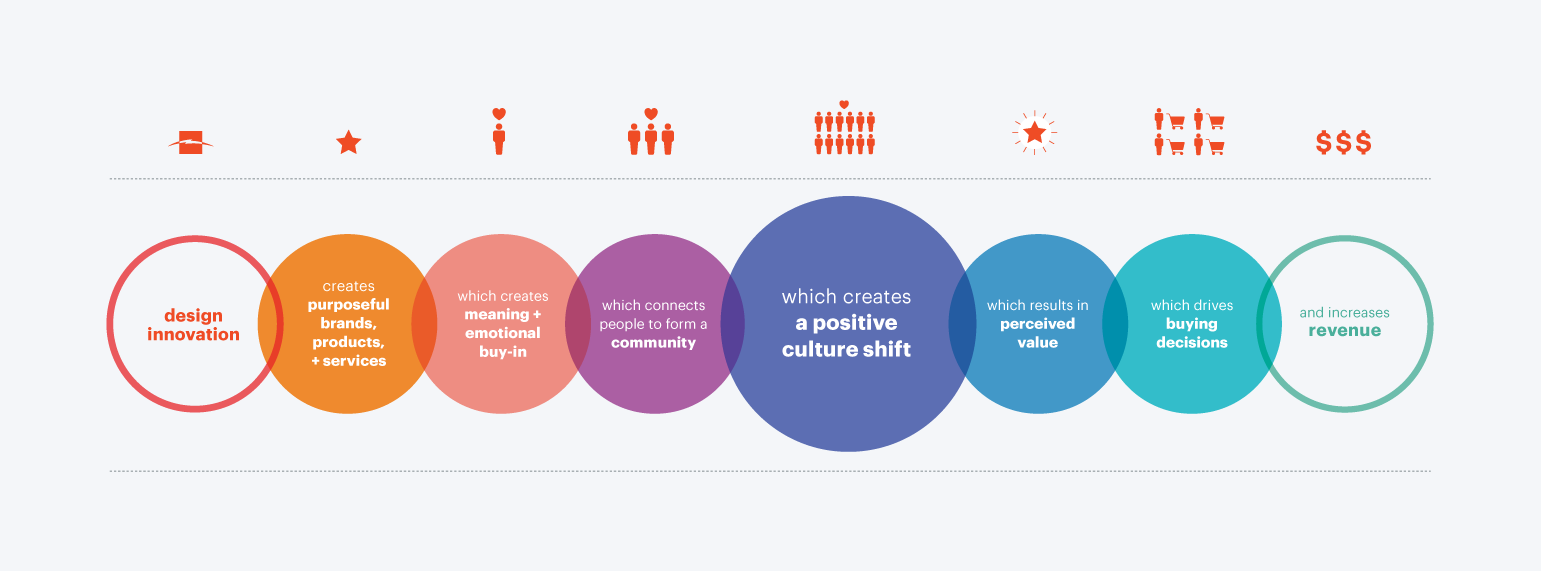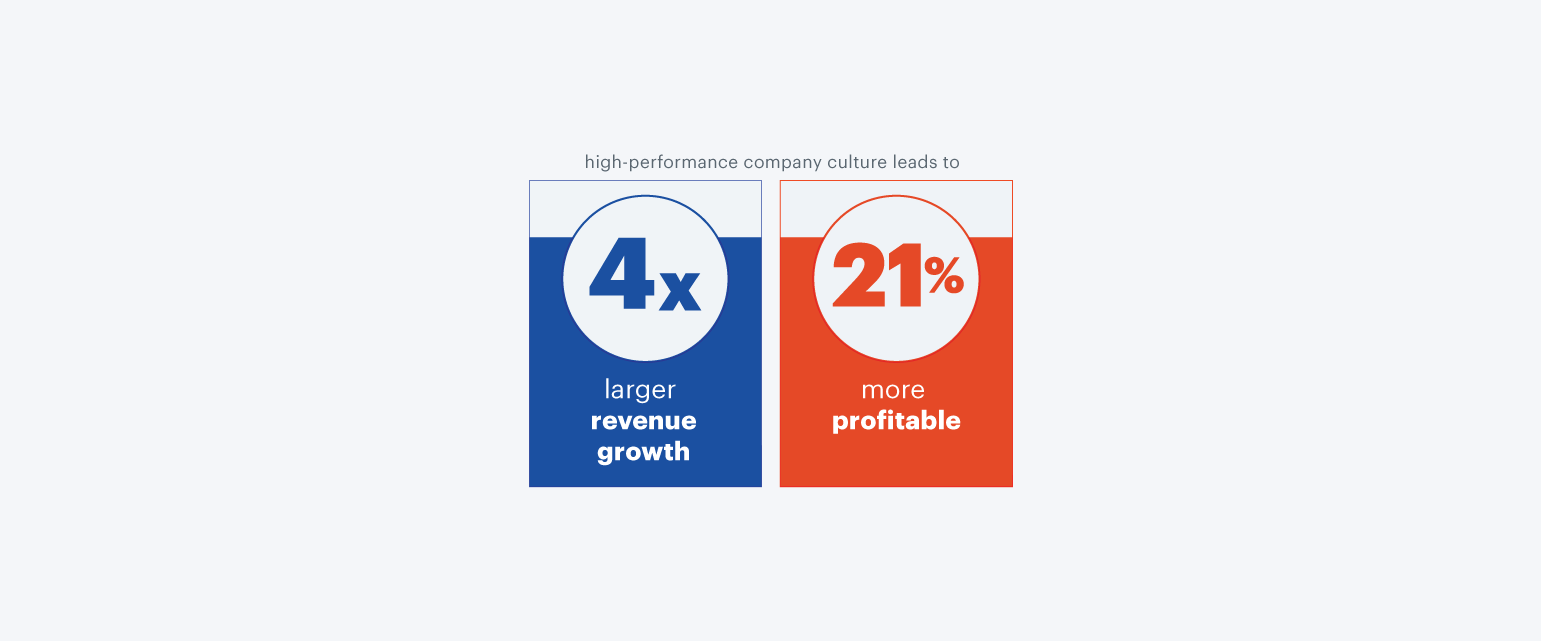
March 10th, 2023
Creating a Culture of Brand Through Design
The Employee Experience and Your Brand
“Most brands fail. Not in the design. They fail in the delivery. To achieve brand traction, companies must first win the hearts and minds of their employees. Of whom fewer than 1/3 know how their job affects brand success.” – Nader Tavassoli, Professor of Marketing, London Business School
I’ve used this quote countless times and will continue to, as it rings as true today as ever. Perhaps more so. As a business owner and employer, the last 30 months has taught me many new things about our folks and their resiliency and grace to deal with the unknown that is this “new normal.” They have remained committed to the goals and culture of our organization, perhaps better than I might have ever imagined. Why? They believe. Quite simply, they believe in what we are doing. And more importantly why we are doing it. A design innovation firm for more than 35 years, BOLTGROUP has worked with countless organizations to help create meaningful impact on their company, their communities, and their culture, through design.

We believe that purpose drives behavior. Behavior drives the brand. Brand drives the business. Our business operates at the intersection of innovation, business, and culture. We use a design thinking methodology to meet our client’s business challenges head on with empathy to develop impactful, deliberate, and innovative solutions in the areas of product design and engineering, brand strategy, design and communication, digital design and UI/UX, and service and experience design. Integration of these areas of focus through design allows your culture and process to be operationalized, allowing scalability without loss of integrity or purpose. And we believe it all starts with purpose. Purpose that is also a driving force behind nurturing and sustaining positive employee experiences, all imbued by and emoted through the brand.

A strong brand has a direct impact on engagement, throughput, recruiting, retention, culture building, and yes, ROI.
As CEO, you have a responsibility to make sure the organizational design allows for deliberate and purposeful integration as a reflection of brand fidelity. The multitude of brand touchpoints in an organization fall into three buckets:
- The Corporate Brand. The overarching representation of a corporation and the reflection of your business strategy through brand governance.
- The Employer Brand. Deeper and greater reflection of your core purpose, culture, personality, and values, targeted toward current, past, and future employees.
- The Customer Brand. The outward expression of the brand to various constituents, as manifested through your products, services, marketing, and external relationships.
The importance of the employer brand cannot be overstated in today’s environment of “the great resignation.” But it doesn’t have to be that. Recruitment, retention, and re-engagement with employees through your brand is the most potent way to influence positive behavior among your employees, and then out into the community and marketplace. Let’s focus on how your employer brand can and does affect recruitment, retention, and re-engagement.

Recruitment
Professor Tavassoli, speaks of the “6 A’s of Engagement.” How you move an employee through the gates of attention, awareness, acceptance, advocacy, action, and finally adherence. This process involves understanding roles, as well as the conversion of antagonists to ambassadors. Finally, bringing the process to life by showing why and how it works. And design thinking can contribute greatly to the empathic perspective within every process and area of your organization.
The recruitment phase of your employees’ journey is where you first have the opportunity to personally touch them with your brand. Even before the recruitment process starts for them, projecting the type of culture and positioning you have, as well as the type of employee you are seeking through how your brand communicates its core values—its pillars, or compelling truths to various audiences—by design, is paramount. Your social posts and commentary, the types of ads you run, or videos you have of the employee experience can and must be a compelling truth in communicating and storytelling the type of organization you have, or want to have, and the ideal associates you seek. Exposing the connective tissue of your brand exposes the truth, transparency, authenticity, simplicity, and clarity you wish to project.
The connective tissue of your brand is like strands of continuity. They can be the tangible elements, like consistent application of visual and verbal brand identity assets, and the tone and manner of how your brand position is communicated to your various audiences. They can be the intangible elements—your team and their daily actions—as a reflection of brand fidelity and position.
They can be about the idea–the truth of purpose that holds you all together. They can be about culture–the way you’ve created an inclusive environment for all of this to naturally manifest around and through the brand.
In truth, for successful organizations, brand is the connective tissue. The key is finding and understanding yours, and then using it to better align your business goals with your brand strategy, resulting in positive behavioral change toward your brand–both internally and externally.
Consider the connective tissue that exists between your brand pillars and purpose, and how your HR department interacts with potential candidates. The contact can and will create a brand experience that is lasting for that candidate, either drawing them closer to your organization, or driving them away. Either way, they’ll share their experience with friends, good or bad. Use your brand foundation as your filter and the brand identity as your style guide. Brand experiences can be large or small, grand or intimate, and evoke the very same feelings. But they must be intentionally designed to trigger those feelings. For one healthcare client, highlighting their amazing brand culture and passion for their clients was the key to developing their most successful recruiting campaign ever. By focusing our videos on their clinicians in walk and talk “day in the life” stories, FOX Rehabilitation, the largest clinician-owned and operated practice in the country, added over 1,000 clinicians in the first year of the campaign, and is now operating in 25 states.

Retention
Hiring that many employees, based on the employee experience and brand culture is one thing. Keeping them is another. How your brand is perceived internally can make a huge difference. I’m certain you’ve thought about this, but have you considered what creates this perception? Where does it start? The tools to building your brand and tailoring its visual and verbal expression are found within—in the major practices and components inside your company. You need a strong foundation, built upon what we like to refer to as the 5 Ps—Purpose, Pillars, Positioning, Personality, and Proposition. With these elements meticulously defined, they become the filter for everything that goes out, first into the organization, and then into the marketplace. Encouraging your internal team to develop a deeper understanding of your 5 Ps will build value over time. Your products, packaging, marketing campaigns, print collateral, social media, and much more will evolve into more authentic experiences of your brand. And per Professor Tavassoli’s (and our) belief, your employees become the brand ambassadors you long for and the greatest assets of your company.
One of the biggest launch pads for developing an authentic expression of your brand is your internal players. From the front office to the back, C-suite to sales, every person in your company is and should be your #1 brand ambassador. The receptionist and account managers should understand the personality and positioning of the brand, and make sure they project this when communicating with customers. Sales and marketing (separate groups by the way) should understand the brand pillars and purpose when approaching potential customers. If there’s an internal creative team, they should fully understand and be able to express the pillars of the brand both visually and verbally through all creative touchpoints.
REI is a great example of a company that understands both the internal and external expression of their brand. By creating a culture where every employee has a keen understanding of the brand’s purpose and strategy, their business goals can align with that strategy. If you dig into REI’s website, you’ll notice the following statement:
“As a purpose-driven cooperative, REI’s business and core purpose are intertwined—we grow our business by furthering our purpose. We’re committed to promoting environmental stewardship and increasing access to outdoor recreation.”
Employees aren’t just asked but encouraged to experience the outdoors with added vacation days, deep discounts on gear, and the ability to apply and receive grants for extended adventures, such as summiting Mt. Everest! With each employee given the freedom to experience nature, the brand expression infuses the retail space. When you talk to an employee about the difference between a 2-season versus a 3-season bag, the person you’re talking to likely has first-hand experience with both.
Remember the filter? When your team members are drinking the Kool-Aid, they’re able to make more thoughtful decisions on executing the brand. Creative teams begin to use those 5 Ps to design purpose-driven packaging and marketing campaigns. If the execution doesn’t reflect the 5 Ps of the brand, then it’s time to rethink or readjust.
REI has strict guidelines for their packaging and products, with policies in place that promote responsible cultivation of renewable materials, a commitment to recycling, and a demand that their vendors also perform at these levels. All of these ideals stem from the core pillars and position of the brand, which creates a more authentic relationship with their customer, and in the culture of the brand.
You may have heard about REI’s bold move to close their stores on black Friday seven years ago. It was risky, but it worked. Why? Because the ad campaign supported the brand’s purpose and position. It encouraged people to #OptOutside and spend the day in nature, rather than a store full of people grabbing everything they could get their hands on. And what do you know, closing your doors can increase sales! This practice continues today. As a result, employee retention at REI is double the industry standard. And its brand is rich in culture.
Re-engagement
It’s fair to say that you may not have a brand at all if you do not have a brand culture. Truth, transparency, authenticity, simplicity, and clarity of brand all emanate from within the organization. No amount of spiff or spin can conjure that up. Creating a brand culture is often easy for the founder. In the early years, the purpose of the brand is self-evident, and fidelity of brand is upheld and protected. The connective tissue is part of its very being. It’s when success and growth start to overtake the founding priorities of legacy and purpose, that a culture of brand can be eclipsed by a culture of operations, or sales, or [insert your poison]. Time, growth, and success can have very positive effects on an organization. But without a vigilant brand steward and insistence of maintaining a high degree of culture around and for the brand, it can erode, fragment, and deteriorate right before your eyes, leaving your employees with nothing but a job to come to. Employee engagement ceases to exist.
There are very profound examples of brand culture in today’s marketplace–from the ubiquitous tale of Apple [one I’ve told many, many times] to Virgin, to John Deere, to Warby Parker, to FOX Rehabilitation. With every example listed, there is a brand champion, often (but not always) the founder, who makes it their job (sometimes their primary job) to constantly, consistently, and cohesively communicate and project the connective tissue of the brand upon its many, many constituents. REI employee engagement is above 80% year after year. John Deere measures morale of their employees every 2 weeks to measure health and functioning of the teams within the organization. This “happiness metric” is vital to staying competitive and nurturing a sustainable brand culture. Warby Parker has built a 1,400 plus-employee company from zero by focusing on brand and team culture.

These examples show the power of creating a culture of brand through design that resonates with employees, motivates, engages, and retains them. Employee engagement continues to be one of the three biggest concerns of HR departments according to Gallup, which has U.S. employee engagement hovering around 32%. Some statistics have employee un-engagement as high as 85%, with actively disengaged employees around 17%. That much of your workforce just punching a clock is very expensive. Disengaged employees cost U.S. companies around $450-$500 billion dollars each year! But it’s not all bad news. For well over a decade, design and brand-led organizations have outperformed other S&P organizations by over 200%. High-performance company culture leads to 4 times larger revenue growth and being 21% more profitable. This correlates to a high employee engagement and a culture of brand.
“Brands must escape the communication silo, using targeted internal marketing campaigns. That coordinate relevant behaviors across 100s of brand touchpoints. That empower brand ambassadors, convert agnostics, and weed out antagonists. Across the entire organization. Because ultimately, people—not advertising—deliver the brand. And the bottom line.” – Nader Tavassoli

Conclusion
So, what is the bottom-line of creating a culture of brand? As I mentioned at the beginning, employees working for strong brands are much happier, better performers, and are viewed with higher esteem among their peers. This has a direct impact on engagement, throughput, recruiting, retention, culture building, and yes, ROI. Use your brand to move your associates through the different levels of engagement to create advocates and ambassadors, and to then maintain and build adherence. Internal brand experiences are as important to brand building as external ones.
If your brand is to drive behavioral change through designed brand experiences, it must be present in all areas of your business. Communicating the brand purpose and promise at every touchpoint. Use your brand as a filter to align your business’ goals with your brand strategy and purpose to influence behavior and instill value and meaning among both external and internal audiences.
And isn’t that what you want from your associates? For them to take an ownership role in everything they do for the organization. It ensures excellence. It commands respect. It defines the culture.
It is often said that the product you produce is one of the most enduring reflections of your brand. That is true. But we believe your people may be the most enduring reflection of your brand. When you create a system in which your brand is allowed to flow throughout the organization, it will feed off and nurture the everyday moments that matter (brand experiences)—both inward and outward facing. This system will keep your business goals aligned with your brand strategy so that your brand is influencing each of those moments and will set in motion the development of a brand ecosystem. One that will be unique, ownable, desirable, believable, defensible, and sustainable. For years to come.
Once every single department of your business can embrace, properly filter, and execute your brand’s foundation, you’ll begin to see an ecosystem emerge, creating the lifeblood needed to transform your brand, and your people into its most powerful assets, as measured by your recruiting success, employee retention, and engagement.